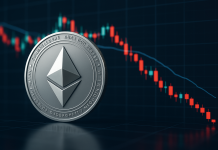A CCN reader wrote in to ask us to explain why he has 13 payments pending in the Bitcoin blockchain. The answer is simple enough: at any time, the Bitcoin main chain can become congested. The only way to ensure Bitcoin payments arrive in a very timely fashion is to either pay the highest possible fee or use Lightning Network , which is still gaining traction.
Lightning Network Usage Dwarfed by Main Chain Usage
For all the fanfare, regular Bitcoin wallet users vastly outnumber Lightning’s users . Therefore, miners are cleaning up in terms of fees right now. According to a site that tracks Lightning Network data , the average “channel” size is just $137 and change at press time. There are close to 39,000 channels, and the network’s total capacity is under $5.5 million.
Meanwhile, between blocks 570,170 and 570,179, just over 26,000 transactions were processed by Bitcoin miners. A total of roughly 153,400 BTC ($765,400) were transacted over this period (less than 2 hours), not including 125 new BTC created or over 15 BTC in fees collected by miners. The current “feerate,” according to Chain.so, is about $1.15 or 0.00022991 BTC per 1000 bytes (just under a kilobyte). Properly formed BTC transactions can be as small as 0.2KB if they have only one input.
Transactions like this one are minimal, but due to the value transacted, whoever sent it decided to pay a much higher-than-standard fee to ensure inclusion. They spent a total of around $40 to post close to $1800 – the transaction size was 225 bytes. This fee is about $12 less than it would have cost to send the same amount via Paypal, according to Salecalc.com .
Traders Will Pay Most Any Price
Congestion is particularly common during bull price movements, like the ones we’ve seen this week, where Bitcoin’s gained nearly $1000 in a matter of hours. Traders rush to get their deposits onto exchanges, and given the profit incentive, they’re willing to pay higher fees to do so. The higher the average price that people are willing to pay, the higher the fee users will need to pay to expect a reasonable delivery time frame.
As a result, there are currently over 75,000 unconfirmed transactions. Their odds of being confirmed lessen with each increase in the average fees paid by newer transactions. Miners have the incentive to accept the highest paying transactions first, of course; thus the issue exacerbates itself as demand for Bitcoin transactions increases. If no new transactions were sent for the next five hours, all of the operations in the “mempool” could be processed in order of fees paid.
Space on the Bitcoin blockchain is incredibly limited and valuable. A long debate, sometimes referred to as a “war,” spanned over two years while people like Mike Hearn , Roger Ver , and Gavin Andresen argued that increasing the block size (also known as “on-chain scaling”) was necessary to prevent congestion.
Replace-By-Fee Was Created for Times Like These
The other option for unconfirmed transactions is to use “replace-by-fee ,” a semi-controversial tool developed by Peter Todd. What RBF does is essentially create a new transaction from the same inputs but adds a higher fee, allowing the transaction to have a higher likelihood of being accepted by miners. The Bitcoin Core wallet and several other wallets, like Blockstream’s Green Wallet, enable RBF.
RBF is only useful for people sending transactions, not those waiting to receive them. If you’re expecting to receive a transaction and it’s showing, but unconfirmed, you cannot count it as actually received until you have at a minimum one confirmation. Most online services recommend 3 to 6 confirmations for security. Unconfirmed transactions eventually phase out of the memory pool if they are not picked up within 72 hours .
Three days is the default expiry time for transactions since Bitcoin Core version 0.12. Funds are then returned to the originating wallet as if never sent, and the user can try again, either with a higher fee or in a friendlier climate.
You Could Use Altcoins…
Another alternative is to use alternative cryptocurrencies when Bitcoin fees are as high as they are. If you’re only holding Bitcoin, of course, you’ll have to make at least one transaction on the network in order to make a conversion. But if you are willing to buy with fiat, your options are much wider. Choosing to receive alternatives to Bitcoin is an option, as well. This option may be useful for people managing payrolls who don’t have days to wait or extra-budgetary funds available to spend sending funds.
The fees for networks like Bitcoin Cash and Litecoin are significantly lower, and space on these chains is more plentiful. See the below chart of the last 3 months:
As you can see in this chart, Bitcoin Core fees have greatly diverged from Bitcoin Cash and Litecoin fees over the last 3 months. In a matter of days they have gone from well under $1 to nearly $2 on average. Source: Bitinfocharts.com
If moving between exchanges, both BCH and LTC represent a viable means of getting funds where you want them. Acting fast enough, your risk of actually losing value is relatively low. In both cases, in recent times, if you had used this method, you would have actually come out with slightly more Bitcoin, depending on the exchange rates and exchanges in question.
Nearly all crypto exchanges support all three. You’re likely to spend less in trading fees than you would in transaction fees.




